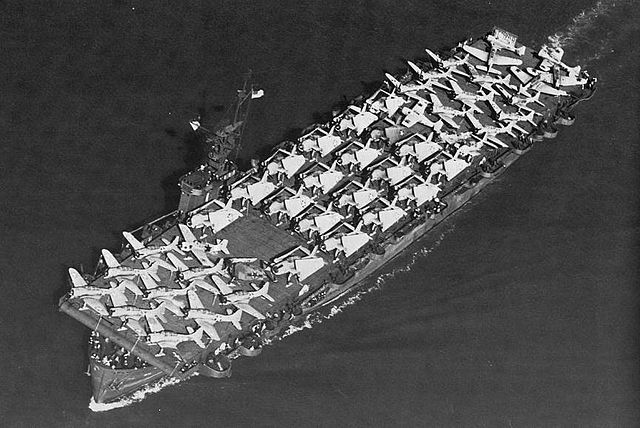USS Liscome Bay (ACV/CVE-56) was the second of fifty Casablanca-class escort carriers built to serve the United States Navy during World War II. Launched in April 1943 and commissioned the following August, she was named for Liscome Bay in Dall Island in the Alexander Archipelago of Alaska. On 24 November 1943, her munitions were catastrophically detonated by a torpedo attack by the Japanese submarine I-175 while she was acting as the flagship of Carrier Division 24, which was supporting operations on Makin. She quickly sank with the loss of 702 officers and sailors. Her loss is the deadliest sinking of a carrier in the history of the United States Navy.
USS Liscome Bay (CVE-56), ferrying aircraft to San Diego, 20 September 1943, with a load of SBD Dauntlesses, TBF Avengers and F4F Wildcats.
Burial at sea aboard troopship Leonard Wood of two Liscome Bay sailors, victims of the submarine attack by I-175. In the foreground facing the ceremony are survivors of Liscome Bay.
Casablanca-class escort carrier
The Casablanca-class escort carrier was a series of escort carriers constructed for the United States Navy during World War II. They are the most numerous class of aircraft carriers ever built. Fifty were laid down, launched and commissioned within the space of less than two years – 3 November 1942 through to 8 July 1944. Despite their numbers, and the preservation of more famous and larger carriers as museums, none of these modest ships survive today. Five were lost to enemy action during World War II and the remainder were scrapped.
USS Guadalcanal, 1944
Casablanca-class escort carriers fitting out, circa April 1944.
USS Lunga Point
USS Gambier Bay under fire at Samar, 1944






